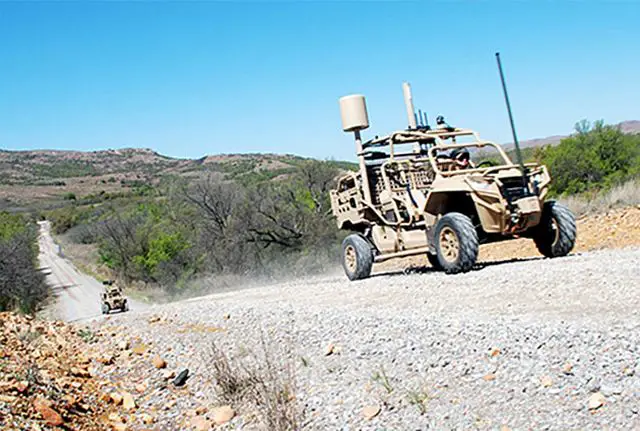|
|
|||
|
Military Defense Industry Technology - Hunter and Killer vehicle
|
|||
|
|
|||
| U.S. army tests the Hunter and Killer vehicle to track aircraft and performs fires targeting. | |||
|
The new "Hunter" and "Killer," was undergoing testing during the 2017 Maneuver Fires Integrated Experiment (MFIX) from April 3 to 13, here at Fort Sill. The vehicles resemble a dune buggy -- a large-wheeled vehicle designed for various types of terrain. But the Hunter and Killer are also designed to track aircraft, perform three-dimensional fires targeting and provide other capabilities.
|
|||
|
|
|||
 The Hunter (right) and Killer vehicles drive up a road toward the experimentation area of the Maneuver Fires Integrated Experiment (MFIX), April 3, at Fort Sill. (Photo Credit: Monica K. Guthrie) |
|||
|
|
|||
|
The vehicles are modular by design, meaning developers can take pieces from other systems and combine them on a single platform. The intent is to make parts interchangeable, according to Scott Patton, science and technology strategist for the U.S. Army Aviation and Missile Research Development and Engineering Center (AMRDEC) battlefield operating systems suites team.
The platform is meant to fight in multiple domains. For land, the Hunter platform could call precision fires in an automated fashion, and for air Soldiers could use the platform to communicate with an aircraft for support. When performing for maritime, a forward observer could call for an attack from a ship to a target. The Killer platform adds the ability to fight in the cyber and space domains. A Soldier could request a cyber call to disrupt communications between a UAV and its operator. Soldiers would also be able to call on space-based capabilities. For forward observers, Soldiers who advance to the enemy's edge and sometimes beyond, technological advances mean new risks and new responsibilities. In addition to their primary duties of gathering intelligence and relaying it back, they may now be called upon to perform precision fires. With the increasing use of unmanned aerial vehicles, they may be asked to intercept UAVs on the battlefield.With all these challenges in mind, the designers of the Hunter and Killer are experimenting during MFIX 2017 with the platform's ability to operate with minimal human instruction. |
|||














